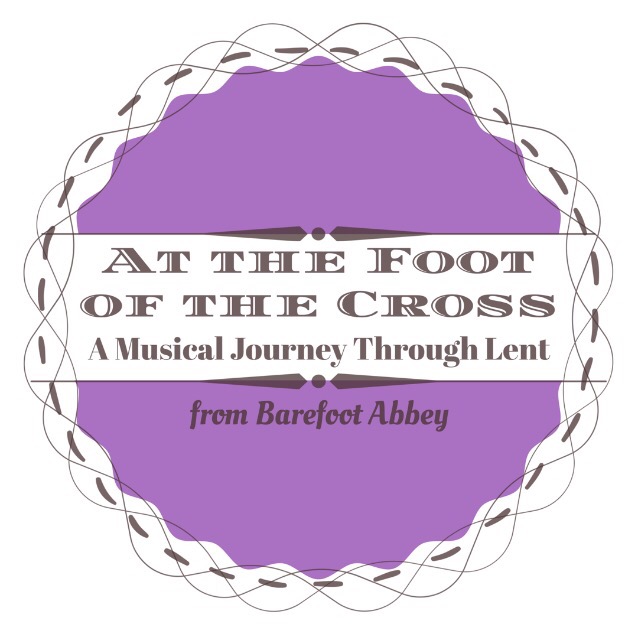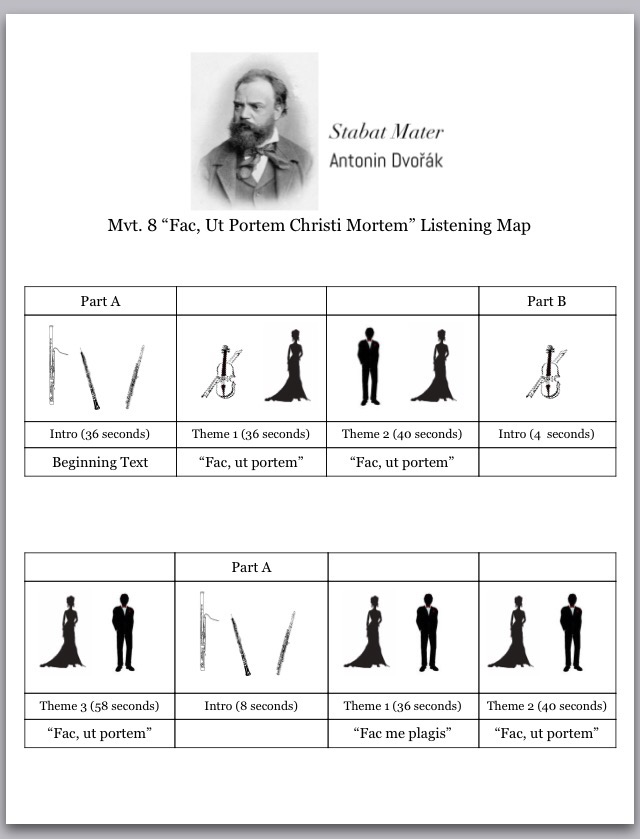
Week 6! We are quickly traversing towards the grandeur of Jerusalem, the whirlwind of Holy Week, and the pageant of the Triduum. I can hardly believe that after today there will be only one week left in this year’s Lenten journey together.
If you are just finding us, don’t be discouraged or feel as though you missed out. There is still time to jump in and benefit from this devotion with your family. Start today by listening to the two movements of Dvořák’s Stabat Mater selected for this week’s listening and participate in the music appreciation lesson below. Each lesson is independent from the last, so there is no need to add undue stress by trying to catch up in a week. You are invited to return to previous weeks at your family’s convenience, should you choose. You can also find more ideas for employing this Lenten devotion at the Overview post.
For your family’s free listening pleasure, here is the whole work:
Dvořák’s Stabat Mater
The Story of Dvořák in Music and Words can be found in the following playlist. We use these tracks of his biography read over his works as part of our family’s free listening.
Week 6
8. “Fac, Ut Portem Christi Mortem” – Soprano and Tenor Duet
Latin Text:
Fac ut portem Christi mortem
Passionis eius sortem
Et plagas recolere
Fac me plagis vulnerati
Cruce hac inebriari
Ob amorem Filii
English Translation:
Thus Christ’s dying may I carry
With him in his Passion tarry
And His wounds in mem’ry keep
Wound me with thy Son’s affliction
Kindle through this crucifixion
Zealous love within my soul
9. “Inflammatus Et Accensus” – Alto Solo
Latin Text:
Inflammatus et accensus
Per te, Virgo, sum defensus
In die iudicii
Fac me cruce custodiri
Morte Christi præmuniri
Confoveri gratia
English Translation:
Thus aflame with fire of love
Shield me, virgin, from above
When I hear the Judgment call
Let the cross now guard and shield me
Death of Christ my ward and plea be
Let me die in your embrace
For our lessons this Lent, we will be using our family’s easy ABC method for listening with purpose. It is a simple three step process that can be used with the whole family and all ages. Your family will be listening to the piece with purpose at least once with specific actions in mind. The whole lesson typically takes around 15 minutes to complete if you include all three steps. It can be expanded based on length of pieces and the extent of conversation. This method is intentionally adaptable to fit all families in hopes that it will aid in fostering a love of music and meaningful connections in your home. Read through the lesson beforehand, then pull out and use what you know will work with your child(ren). Don’t be afraid to include the youngest of children too! My 1 year old daughter and goddaughter just dances around while listening and that is perfect!
Our Easy ABCs for Music Appreciation
Begin by printing this week’s listening maps at the bottom of this post and gathering everyone together for your family listening time. Our family reads the text and translation then participates in the lesson.
If you have any questions please don’t hesitate to leave a comment. I want these lessons to be as user friendly as possible!
You can share what you like from the following or use it as an easy script:
Our music lesson today will focus on the first of our two pieces for this week, “Fac, Ut Portem Christi Mortem”. Written as a duet for Soprano and Tenor, this 8th Movement of of Stabat Mater has no choral accompaniment. In it’s ABA form, the music from the first section returns after a short instrumental break, but with different words. The piece begins with a legato (flowing, smooth) introduction by the woodwind family, the bassoons and oboes then the flutes. Next the Soprano (higher female voice) enters with the string family (violin, cello, etc) and introduces the whole first half of the text’s stanza alone. The same melody is then given to the Tenor (higher male voice) while harmony is provided by the Soprano. Strings usher in the short B portion of the piece and the same part of the text is sung for the third time. The words are the same but the melody is different. Another short introduction by the woodwinds family signals the return of the A portion. Here the music is the same but the text is the second half of the stanza beginning with “Fac me plagis vulnerati”. The piece ends with one last appearance of the first half of the text.
Now onto the main processes of our Listening ABCs.
A – Attentive Listening
Before you play the piece for the first time, ask your family to close their eyes and listen silently. Ask them to try and get a feeling, picture, or story in their mind of what the music reminds them of. They may remember some of the text translation read earlier. We really want them to get their imaginations running for this first listening. Ask them to share what they saw in the music. There is no right or wrong answer.
B – Bodily Movement
Now we’re going to add a bodily movement to help our brains connect our memory and the music. Following the listening map below, have your family listen to the piece for a second time. You may count each section aloud or just in your head as you guide your students through the map. It is quite alright to do it more than once to get more practice and understanding. Remember, the treasure at the end of a listening map is the time spent together on the musical journey. Younger students may also draw what they hear in the music. If drawing is chosen, the picture may be whatever the children imagines, however detailed or abstract.
C – Conversation
This concluding segment is where we talk about the elements we hear in the music. Each time your family listens with purpose using these ABCs, they will hear and be able to verbalize more and more. Any observation is welcome and should be praised during this listening. In this section you may choose to have your family listen to the piece one last time while pointing out the elements of the music they recognize. Your family may also go straight on to the discussion. Can anyone point out similarities or differences between the A and B portions of the music? Which Themes (musical sentences) did your family members like the best? Did anyone have a preference for one of the vocal parts over the other? Were any instrument families or individual instruments recognized in the piece from hearing or following the listening map? The mood of the piece can also be discussed here by asking how the music made your family feel and sharing your own response.
(Just click on the picture to download)


